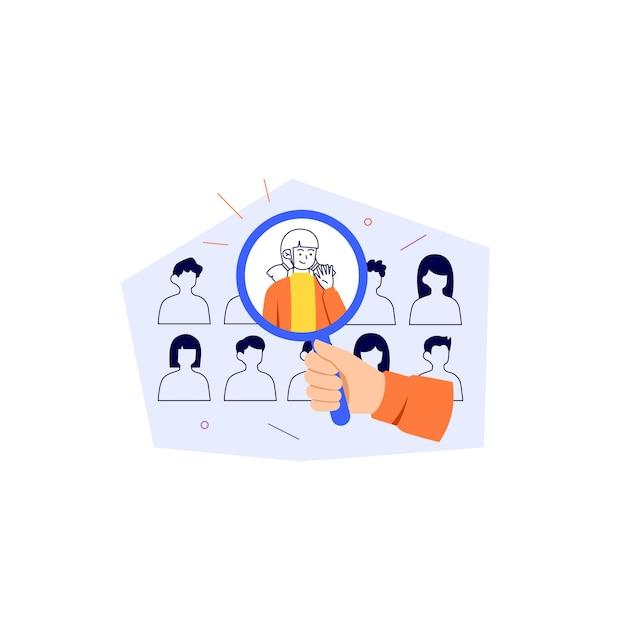When was the last time you bought a product or used a service? Did you stop to think about the journey you took before making that decision? The customer journey is an essential part of any business, and understanding it can help you create better experiences for your customers. In recent years, storytelling has become an increasingly prominent part of the customer journey. Companies are now using stories to connect with their customers on a deeper level. In this blog post, we’ll explain the customer journey, what customer storytelling entails, and the five stages of the customer journey. So, sit back, relax, and let’s dive in!
The Power of Storytelling in a Customer Journey
Have you ever heard a story that made you feel like you were part of it? That’s the magic of storytelling. It’s not just a bunch of words strung together; it’s a way of bringing people together with a shared experience. And when it comes to a customer journey, storytelling can be a powerful tool.
Every Journey Needs a Hero
In any story, the hero is the central figure that we all root for. It’s the same with a customer journey. Your customer is the hero, and your job is to guide them through their adventure. Think of yourself as their trusted sidekick, there to provide guidance and support along the way.
Setting the Stage
Just like a good book or movie, the setting plays an important role in a customer journey. It’s not just about the physical environment; it’s also about the emotional context. Make sure you set the stage with your brand values and personality. This will make your customer feel like they’re part of something special.
The Plot Thickens
Every good story has twists and turns that keep the audience on the edge of their seats. The same goes for a customer journey. There will be ups and downs along the way, but it’s your job to keep the customer engaged. Be there for them when they need help, and celebrate their milestones with them.
The Climax
In storytelling, the climax is the moment of highest tension and drama. In a customer journey, this is the moment when the customer reaches their goal. It’s the pinnacle of their adventure, and it should be celebrated accordingly. Make sure you’re there to cheer them on and let them know how proud you are of their achievement.
The Happy Ending
All good stories have a happy ending, and your customer journey should be no different. Make sure you thank your customer for choosing your product or service and let them know that you appreciate their business. And who knows, maybe they’ll become a hero in their own right by sharing their experience with others.
Storytelling may not seem like an obvious tool for a customer journey, but when used effectively, it can make all the difference. By putting your customer at the center of the story, setting the stage, providing a plot full of twists and turns, and celebrating their successes, you can create an experience that they’ll never forget. So go ahead, grab your pen, and let the storytelling begin!
Customer Journey Explained
Are you wondering what a customer journey is all about? Well, you’ve come to the right place! In simple terms, a customer journey is the process a customer goes through from when they first learn about your brand to when they finally become a loyal customer. It’s like a road map that highlights all the important touchpoints where you and your customer interact.
Understanding the Stages of a Customer Journey
There are different stages in a customer journey, and it’s crucial to understand each of them to help you create a holistic, personalized experience for your clients. Here they are:
Awareness
At this stage, your customer first learns about your brand and its offerings. They may stumble upon your website, social media pages, or come across an advertisement. The goal at this stage is to capture their attention and pique their interest.
Consideration
After becoming aware of your brand, your customer enters the consideration stage. At this point, they evaluate your offerings, compare them with other similar products, read reviews, or seek opinions from family and friends. Your goal, at this stage, is to highlight your unique selling points, build trust, and convince them to choose your brand.
Conversion
Once the customer decides to choose your brand, they enter the conversion stage. Here, they make a purchase or subscribe to your services. Your goal at this stage is to create a seamless, positive experience to encourage repeat conversions.
Post-Purchase
After making a purchase, the customer enters the post-purchase stage. This stage is crucial as it determines whether the customer remains loyal to your brand or not. Your goal is to provide excellent customer service, gather feedback, and create opportunities for upselling or cross-selling.
Why is Customer Journey Important
Understanding the customer journey is vital as it helps you create a personalized experience that meets your client’s expectations. By identifying the touchpoints and pain points in each stage, you can optimize your marketing strategies, improve customer satisfaction, and, ultimately, increase revenue.
In conclusion, the customer journey is a crucial aspect of your brand’s success. Understanding each stage and working towards creating a seamless experience for your clients should be your top priority. So, what are you waiting for? Start mapping out your customer journey today!
What is customer storytelling
Storytelling is an art that has been around for ages. It’s a way of passing down traditions, beliefs, and values from one generation to another. In recent years, storytelling has become an important aspect of marketing. Customer storytelling is telling the story of your brand through the eyes of your customers. It’s a powerful tool that can help you connect with your audience and build lasting relationships.
The Power of Storytelling in Marketing
Marketing has always been about creating a connection with your audience. However, in the digital age, consumers are bombarded with ads from every angle. To cut through the noise, brands need to create an emotional connection with their audience. And that’s where storytelling comes in.
Why Customer Storytelling Matters
Customer storytelling is all about putting your customers at the center of your marketing efforts. It’s about creating content that resonates with your audience and makes them feel seen and heard. When you tell a story from the customer’s perspective, you create empathy and understanding.
The Benefits of Customer Storytelling
There are many benefits of customer storytelling. First and foremost, it helps build trust with your audience. When customers see themselves in your marketing, they’re more likely to believe in your brand. Secondly, customer storytelling can help you differentiate yourself from your competitors. By focusing on the customer experience, you can showcase what makes your brand unique.
How to Use Customer Storytelling in Your Marketing Strategy
To use customer storytelling in your marketing strategy, you first need to identify your target audience. Once you know who you’re targeting, you can start collecting customer stories. Make sure to ask open-ended questions and allow your customers to tell their own stories. Then, use these stories to create content that resonates with your audience.
In conclusion, customer storytelling is a powerful tool that can help you connect with your audience and build lasting relationships. By putting your customers at the center of your marketing efforts, you can create content that resonates with your audience and builds trust. So, what are you waiting for? Start collecting customer stories and incorporating them into your marketing strategy today!
The 5 Stages of Customer Journey: A Fun and Informative Guide
Whether you’re a marketer, a business owner, or just someone interested in understanding the psychology of consumer behavior, it’s important to know the different stages of the customer journey. So, what are they? In this section, we’ll break down the five stages of the customer journey in a fun and informative way.
Stage 1: Awareness
The first stage of the customer journey is all about awareness. This is where the customer becomes aware of your product or service. They may have seen an ad, heard about you from a friend, or stumbled upon your website while searching for solutions to their problems. This is the stage where you need to create a good first impression and let them know who you are and what you offer.
Stage 2: Interest
Once the customer becomes aware of your product or service, the next stage is to generate their interest. You need to convince them that your solution is the best one for their problems. This is the stage where you can start building a relationship with the customer and providing value through your content.
Stage 3: Consideration
The consideration stage is where the customer starts evaluating your solution and comparing it to your competitors. They may be looking at your pricing, features, or reviews from other customers. This is the stage where you need to make sure you stand out from the crowd and address any concerns or objections the customer may have.
Stage 4: Purchase
Now comes the exciting part – the purchase stage. This is where the customer decides to buy your product or service. It’s important to make the buying process as smooth and easy as possible for the customer. Make sure your website is user-friendly and the checkout process is quick and straightforward.
Stage 5: Loyalty
Finally, the last stage of the customer journey is loyalty. Once the customer has bought your product or service, it’s your job to keep them coming back for more. This is where you can provide excellent customer service, offer loyalty rewards, and upsell new products or services.
In conclusion, understanding the five stages of the customer journey is crucial for any business looking to build a successful customer base. By creating a positive customer experience at each stage, you’ll not only attract new customers but also retain your current ones. So, now that you know the different stages of the customer journey, it’s time to start implementing strategies to elevate each stage and turn prospects into loyal advocates!


